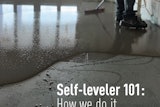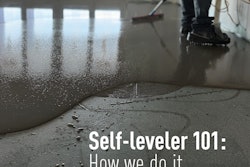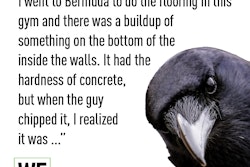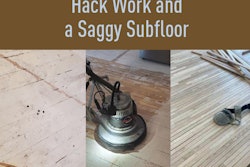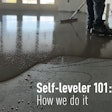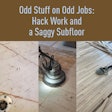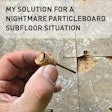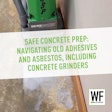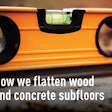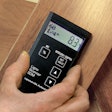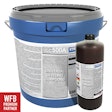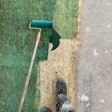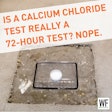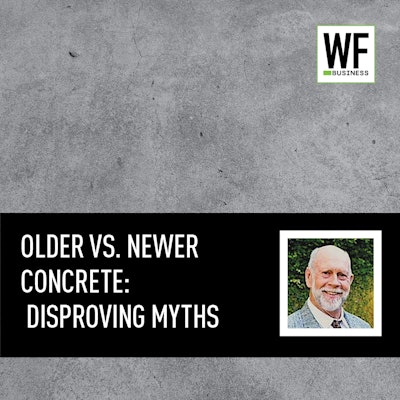
Concrete plays a big role in the success or failure of many wood floor projects, but there is still a lot of misinformation about concrete that has become lore in the industry. Let’s take a look at some facts.
New concrete
It is a given that under similar environments, newer concrete, particularly concrete within the first six months of placement, will have a higher moisture content than mature concrete.
Concrete placed in cooler temperatures takes longer to set and cure. The upside is that it also produces higher quality. Concrete placed in elevated temperatures will set and cure much faster, providing good convenience for project scheduling but sacrificing long-term quality, producing a much more permeable surface at odds with a flooring product that can be sensitive to moisture.
Older concrete
It is assumed that older concrete that has not had any moisture issues with a prior wood floor is sufficiently dry, so there is little need for moisture testing. This is based on false precepts.
Most everyone is taught that moisture migrates from the sub-base beneath the concrete to the surface. But unless the environment is consistently warmer around and under the concrete, this information is erroneous. We are also taught that the underside of the concrete is generally cooler than the concrete surface and cooler than the ambient environment within the room where the wood floor has been for years.
The problem with that lesson is that it violates the second law of thermodynamics: Heat always flows spontaneously from hotter to colder regions of matter. Moisture moves from warm to cool; therefore moisture doesn’t migrate from the cooler underside to the warmer surface. In fact, what causes migration of contaminants is created by a combination of factors not covered in this article.
What does happen is that the surface of concrete is more permeable and porous than the rest of the concrete. Even in optimal laboratory curing conditions, a concrete surface is substantially weaker than the rest of the concrete. This disproves the assumption that concrete is consistent and homogenous.
Concrete, particularly older concrete, will allow a disproportionate volume of water-loving materials to settle close to the surface and immediately beneath the flooring assembly. As long as there are no aggressive chemicals, damage to the wood flooring is inconsequential.
Because the surface is consistently warmer than the underside, there is no migration of water from below, but there can be an inordinate accumulation of water-loving compounds. The warmer surface attracts these materials because the warmth tends to make water-loving materials more chemically active!
There are no issues as long as this concrete surface isn’t exposed to a new moisture source. But unfortunately this happens as soon as you remove the old floor from the concrete and the surface is now exposed to a new moisture source: ambient moisture!
Recent experience: a wake-up call
In 2023, I was at a seminar on concrete moisture meters. The warehouse where this demonstration took place was more than 40 years old. An area was measured with the curing compound/sealer intact. The moisture meter reading was 1.9%. Immediately after the coating was removed, the reading was again 1.9%. The group moved to a different area, then returned 10–15 minutes later, and when that same area was retested, the moisture level was 4.3%!
They were shocked. I told them this is not unlike a calcium chloride test—but instead of a hygroscopic salt in a dish attracting moisture from the concrete, this was hygroscopic salts in the concrete surface attracting moisture from the air into the concrete.
If a new floor were placed over this concrete and failed, the newer floor would have been considered more “moisture sensitive” and likely inadequate. In essence, blaming a symptom of the problem as the problem!
Let’s start preventing problems
It is typical to remove a coating or existing wood floor and not conduct any moisture testing until many hours later or even the next day. If that procedure had been followed, none of this discovery would have taken place, and the MC would likely have been much higher than our 15-minute exposure. This moisture would have been assumed to have originated from the concrete, not the ambient conditions.
Think of how often this happens, day in and day out. There are few things more sustainable than doing it right the first time, lessening the amount/volume of materials used and replaced, as well as wasted time. Stop the endless cycle of fixing and repairing, and start preventing!











